With the onset of winter, I look to cook dishes that are warming in nature and help to ward off cold and cough. One such dish is this Sundakkai Vatha Kuzhambu or Dried Turkey Berries in a Spicy Tamarind Gravy.

As I have repeatedly said, the Indian kitchen is a veritable treasure-trove of home remedies. Not only are many of the dishes we cook curative, many also have prophylactic in nature; after all, prevention is better than cure. This Sundakkai Vathal Kulambu falls in that category.
In addition, this delicious, spicy and tangy dish can make the palate sing and leave you wanting more!
I have made the traditional version of Sundakkai Vatha Kuzhambu that uses no shallots (madras onions) and no tomato. Both these ingredients help give bulk to this dish, while the tomato also helps you use less of the tamarind and make this Vatha Kulambu less sour.
The Many Benefits of Sundakkai Vatha Kuzhambu
Sundakkai or Turkey Berry (Solanum Torvum) is known to:
- be high in iron. When combined with tamarind which is high in Vitamin C and folates as in this Kuzhambu, you have a dish that can help treat anaemia.
- have a high fibre content thus promoting digestion. Once again when combined with fibre-rich tamarind, we have a potent combination for improving gut health and aiding weight-loss.
- be rich in antioxidants that keep the heart healthy and keep cardiovascular diseases at bay.
- help eliminate uric acid from the body and thus promote kidney function.
- aid in reducing phlegm and mucus and thus combating cold, asthma, and other respiratory problems
- lower high body temperature and reduce fever.
- help in regulating insulin production and absorption of glucose, and so help in managing diabetes.
While it all sounds medicinal, fear not! Sundakkai Vatha Kuzhambu is just delicious and is just the perfect accompaniment for steam rice and ghee, or then Curd Rice.
Tips to Make Sundakkai Vathal Kulambu
- You can use Sambar Powder to make this Kuzhambu, I would recommend that you make the masala afresh like I did because then the taste of this Arachuvitta Sundakkai Vatha Kuzhambu would be incomparable.
- The kuzhambu tastes very sour and tangy just after it is made, so let it rest for a while (at least 1 hour) to absorb all tastes including that of the faintly bitter taste of the Sundakkai Vathal. I find that this Vatha Kuzhambu tastes even better the next day. 🙂
- I did not add any shallots (madras onions) or tomatoes to this dish. You can add either or both. If you add tomatoes, reduce the amount of tamarind, otherwise the dish will be just too sour to taste.
- If you want a mellower version, you can add 2 tbsp grated coconut to the masala before grinding it.
- You could add just the tiniest bit of jaggery towards the end to bring out the tanginess of the tamarind.
- As with many Indian dishes, this is a vegan dish. You can make it gluten-free by omitting the asafoetida or then using pure uncompounded asafoetida.

Other Tamarind-based Recipes You May Like
- Ulli Theeyal | Shallots in a Spiced Coconut Tamarind Gravy
- Pavakka Theeyal (Bitter Gourd in a Spiced Tamarind and Coconut Gravy)
- Pulihora Pulusu: A Tangy Gravy from Andhra and Telangana
- Puli Inji | Inji Puli: The Ginger, Tamarind, and Jaggery Chutney from Kerala
- Chintapandu Pachadi | Andhra Tamarind Chutney
How to Make Arachuvitta Sundakkai Vatha Kuzhambu (Turkey Berry in a Spicy Tamarind Gravy)
- Making the Tamarind Pulp
- Soak a 1.5″ ball of dark, aged tamarind in 1/4 cup warm water for 10 minutes.
- After the tamarind has soaked, mash well with your fingers and then squeeze to extract the pulp.
- Once again add 1/4 cup water to the tamarind and repeat the process to extract more pulp.

- Keep the pulp and discard the tamarind.
- Frying the Sundakkai Vathal
- In a small pan, heat 1 tbsp sesame oil.
- Add 3 tbsp Sundakkai Vathal and stir-fry till they are well-browned.

- Remove from the pan and set aside.
- Making the Masala Paste (Substitute: 3 tsp Sambar Powder mixed in 1/4 cup water)
- In a small pan, heat 1 tbsp oil.
- Add 1 tsp chana dal and stir-fry till it starts to change colour.

- Now, add 1 tsp udad dal and stir-fry the two till light golden brown.

- Next, add 1/2 tsp rice and 1/4 tsp pepper, and stir-fry for a few seconds.

- Now, add 3 tsp coriander seeds and stir-fry for a few seconds.

- Finally add 4 bydagi chillis (for colour) and 3 spicy red chillies.
- Stir-fry for a few seconds and then take off the heat.
- {Optional: Omit for a gluten-free dish} Add 1/4 tsp asafoetida to the hot ingredients and set aside to cool.

- After all ingredients have cooled, grind them to a smooth paste with 1/4 cup water.
- Making Sundakkai Vatha Kuzhambu
- In a heavy-bottomed vessel, heat 1 tsp sesame oil.
- Add 1 tsp mustard seeds and wait till they crackle.
- Add 1-2 split red chilli and a few curry leaves. I used the round red chillies.

- Stir-fry for a few seconds.
- Add the extracted tamarind pulp and 1/2 cup water.
- Let the mix boil for a few minutes.

- Now add the ground masala, 1/4 tsp jaggery, some salt and 1/2 cup water.
- Mix well and let the mix boil for 5 minutes and thicken a bit.

- Finally, add the fried Sundakkai Vathal and let the Kuzhambu boil for 3 to 5 minutes.

- Take off the heat, cover and set side for at least 1 hour.

- Enjoying Sundakkai Vathal Kulambu
- Mix warm Sundakkai Vatha Khuzambu with some hot steamed rice that is topped with ghee or sesame oil.
- Serve this Vathal Kulambu as a side to curd rice.

Recipe for Arachuvitta Sundakkai Vatha Kuzhambu
Arachuvitta Sundakkai Vatha Kuzhambu (Vathal Kulambu)
Equipment
- Bowl
- Heavy-bottomed Vessel (1.5 litre capacity)
- Frying Pan
- Grinder
- Spoon
- Ladle
- Small Plate
Ingredients
- 3 tbsp Sundakkai
- 1 tsp Chana Dal
- 1 tsp Udad Dal
- 3 tsp Coriander Seeds
- 1/2 tsp Rice
- 1/4 tsp Pepper Corns
- 4 Bydagi Chillies
- 3 Spicy Red Chillies
- 1/4 tsp Asafoetida
- 1 tbsp Oil (Sesame Oil Preferred)
- 1.5" Tamarind Ball
- 1/2 Cup Warm Water
- 1 tsp Oil (Sesame Oil Preferred)
- 1 tsp Mustard Seeds
- 1 Red Chilli
- 1/4 tsp Jaggery
- A Few Curry Leaves
- Salt to Taste
Instructions
- Soak a 1.5″ ball of dark, aged tamarind in 1/4 cup warm water for 10 minutes.
- After the tamarind has soaked, mash well with your fingers and then squeeze to extract the pulp.
- Once again add 1/4 cup water to the tamarind and repeat the process to extract more pulp.
- Keep the pulp and discard the tamarind.
- In a small pan, heat 1 tbsp sesame oil.
- Add 3 tbsp Sundakkai Vathal and stir-fry till they are well-browned.
- Remove from the pan and set aside.
- In a small pan, heat 1 tbsp oil.
- Add 1 tsp chana dal and stir-fry till it starts to change colour.
- Now, add 1 tsp udad dal and stir-fry the two till light golden brown.
- Next, add 1/2 tsp rice and 1/4 tsp pepper, and stir-fry for a few seconds.
- Now, add 2 tsp coriander seeds and stir-fry for a few seconds.
- Finally add 4 bydagi chillis (for colour) and 4 spicy red chillies.
- Stir-fry for a few seconds and then take off the heat.
- Add 1/4 tsp asafoetida to the hot ingredients and set aside to cool.
- After all ingredients have cooled, grind them to a smooth paste with 1/4 cup water.
- In a heavy-bottomed vessel, heat 1 tsp sesame oil.
- Add 1 tsp mustard seeds and wait till they crackle.
- Add 1 split red chilli and a few curry leaves.
- Stir-fry for a few seconds.
- Add the extracted tamarind pulp and 1/2 cup water.
- Let the mix boil for a few minutes.
- Now add the ground masala, 1/4 tsp jaggery, and some salt.
- Mix well and let the mix boil for 5 minutes.
- Finally, add the fried Sundakkai Vathal and let the Kuzhambu boil for 3 to 5 minutes.
- Take off the heat, cover and set side for at least 1 hour.
- Mix warm Sundakkai Vatha Khuzambu with some hot steamed rice that is topped with ghee or sesame oil.
- Serve this Vathal Kulambu as a side to curd rice.

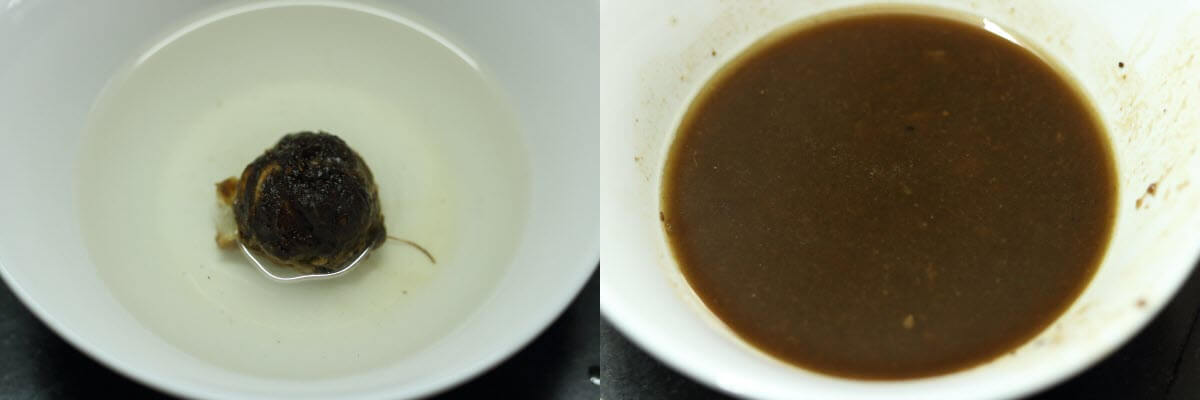
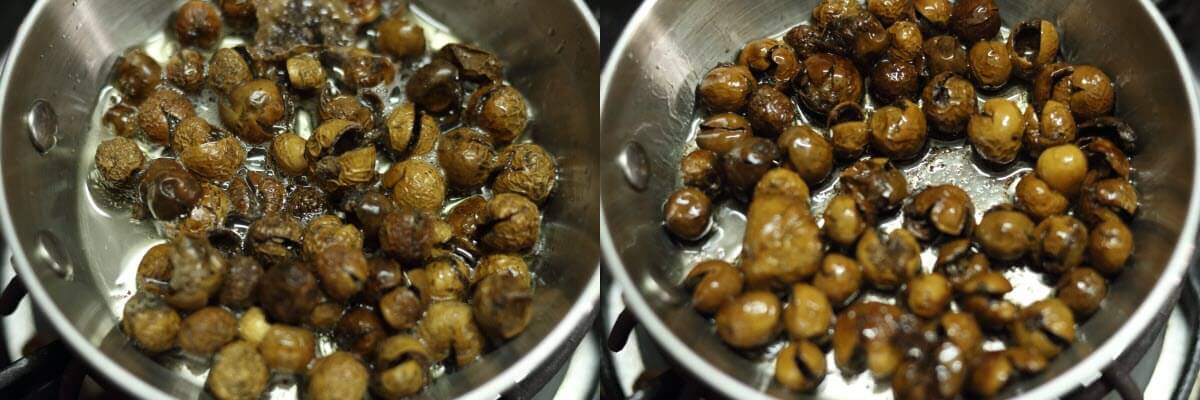
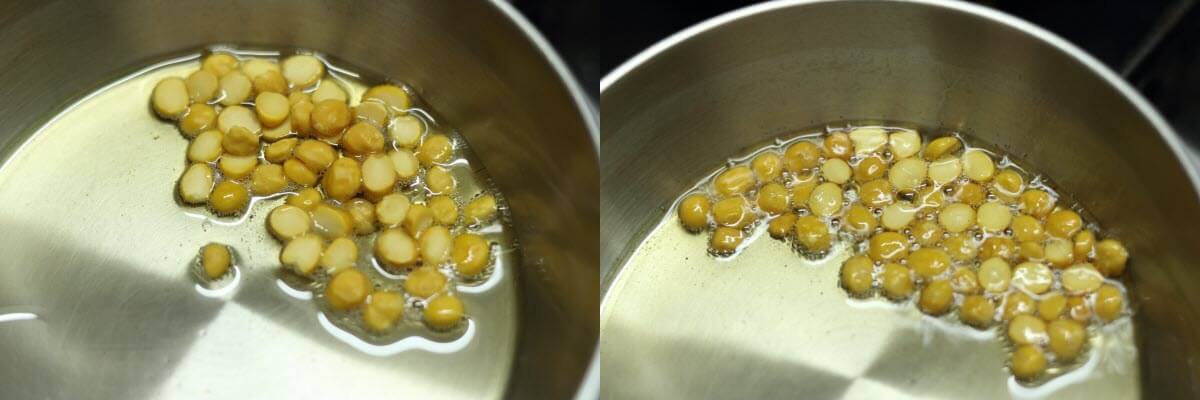
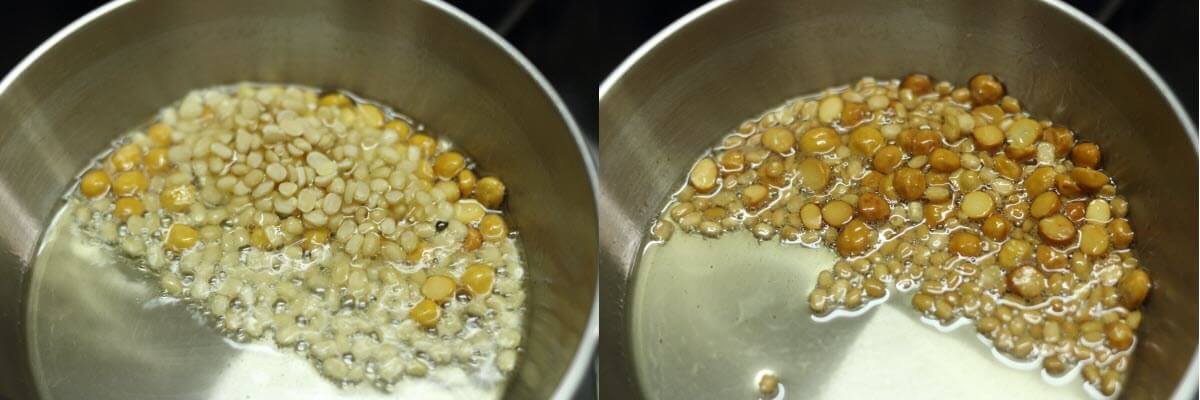
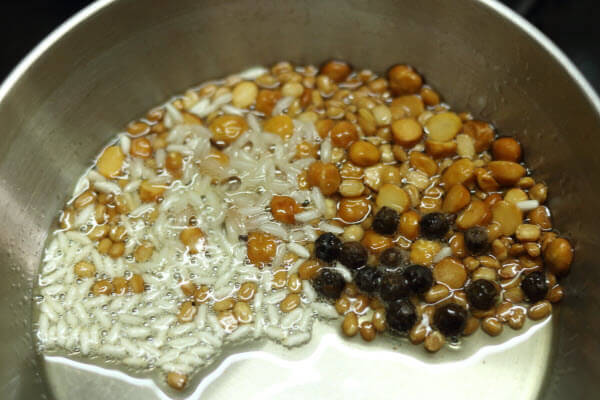
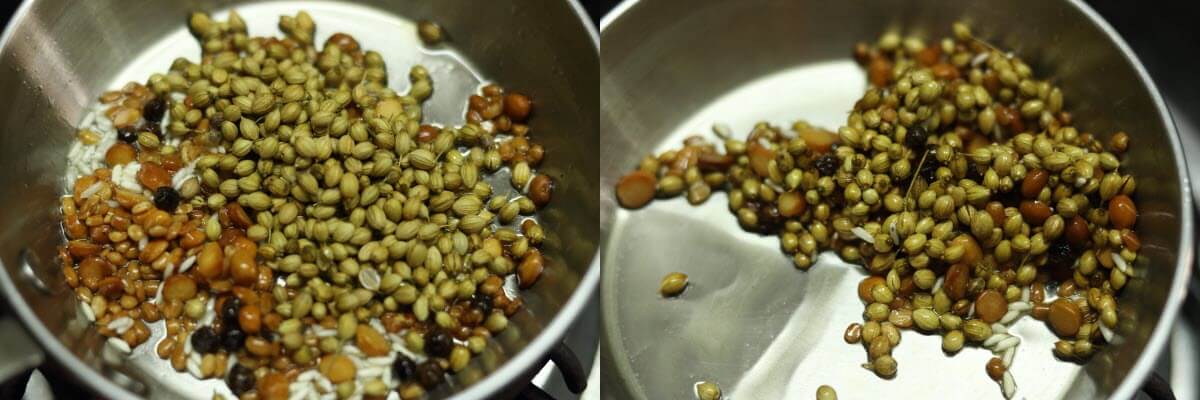

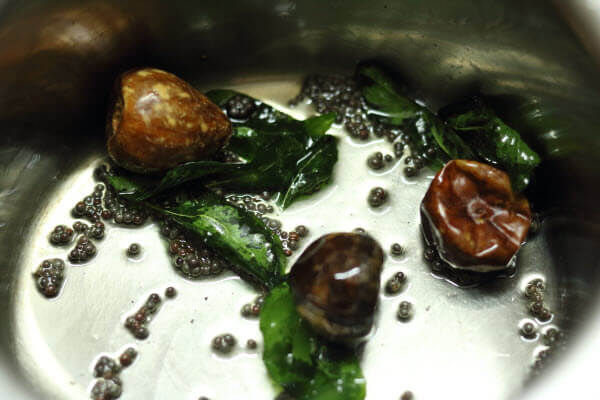



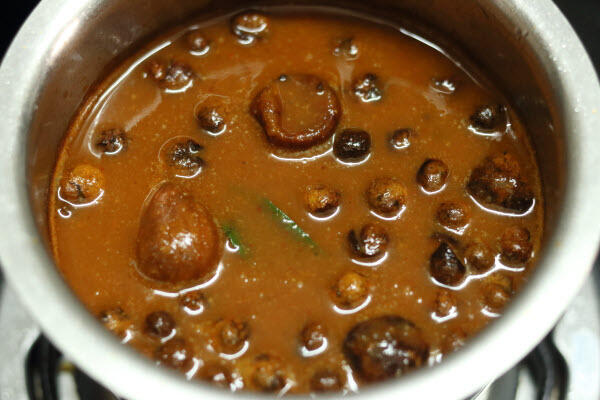


Leave a Reply